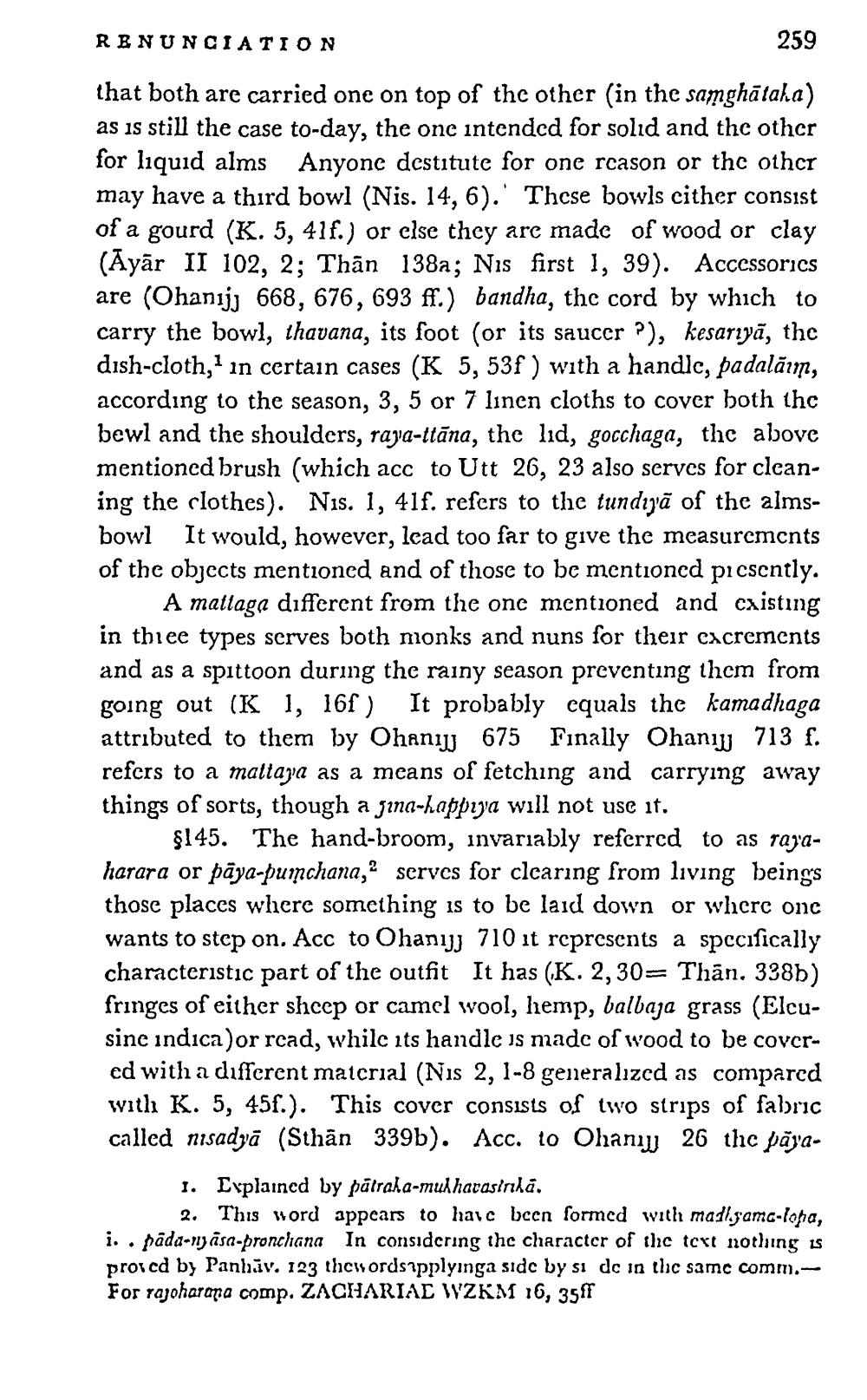________________
RENUNCIATION
259
that both are carried one on top of the other (in the samghātaha) as is still the case to-day, the one intended for solid and the other for liquid alms Anyone destitute for one rcason or the other may have a third bowl (Nis. 14,6).' These bowls cither consist of a gourd (K. 5, 41f.) or else they are made of wood or clay (Āyār II 102, 2; Thân 138a; Nis first 1, 39). Accessorics are (Ohanijj 668, 676, 693 ff.) bandha, the cord by which to carry the bowl, thavana, its foot (or its saucer ?), kesarıyā, the dish-cloth, in certain cases (K 5,53f) with a handlc, padalām, according to the season, 3, 5 or 7 linen cloths to cover both the bowl and the shoulders, raya-ttāna, the lid, gocchaga, the above mentioned brush (which acc to Utt 26, 23 also serves for cleaning the clothes). Nis. 1, 41f. refers to the tundiyā of the almsbowl It would, however, lead too far to give the measurements of the objects mentioned and of those to be mentioned picscntly.
A matlaga different from the one mentioned and cxisting in thiee types serves both monks and nuns for their excrements and as a spittoon during the rainy season preventing them from going out (K 1, 16f) It probably equals the kamadhaga attributed to them by Ohani 675 Finally Ohanı 713 f. refers to a mattaya as a means of fetching and carrying away things of sorts, though a gina-happya will not use it.
$145. The hand-broom, invariably referred to as rayaharara or pāya-pumchana, serves for clearing from living beings those places where something is to be laid down or where onc wants to step on. Acc to Ohanijj 710 it represents a specifically characteristic part of the outfit It has (K. 2,30= Thân. 338b) fringes of either shсep or camel wool, hemp, balbaja grass (Elcusinc indica)or rcad, while its handle is made of wood to be covered with a different matcrial (Nis 2,1-8 generalized as compared with K. 5, 45f.). This cover consists of two strips of fabric called nisadyā (Sthan 339b). Acc. to Ohanij 26 thc pāja
1. Explained by pátrala-mul harasiriha.
2. This word appears to have been formed with madisama-lona, i.. pada-11) asa-pronchana In considering the character of the tort nothing is proi cd by Panhāv. 123 thcwordszpplyinga side by si dc in thic samc comm.For rajoharana comp. ZACHARIAL WZKM 16, 35fT




